Content Sections
By Rob Verkerk PhD, founder, Alliance for Natural Health; executive & scientific director, ANH Intl and USA and Paraschiva Florescu, mission facilitator
Perpetual, pervasive and possibly deadly
‘Forever chemicals’, known chemically as per- and polyfluoroalkyl substances or PFAS, are not just persistent and hazardous to life, they are also all-pervasive. From our food, water, soil, rain to the paper straws we use and the blood of our children, PFAS are everywhere. The negative, diverse and insidious effects of PFAS on health are the subject of very active research, all of it contributing to an ever more disturbing picture of their likely long-term effects on our health. They have been found to impact multiple systems, including our immune, cardiovascular and reproductive systems, and have been designated as possibly carcinogenic by the US National Cancer Institute. The costs of PFAS to society are estimated at around €16 trillion per year and many of the PFAS producers would go bankrupt if they were asked to pay for the pollution and societal effects they cause.
The European Chemicals Agency is alive to the detrimental consequences of PFAS to our health and has proposed dramatic restriction of their use by 2026 within the European Union. Many organisations, us included and our sister organisation, ANH-USA, have joined international efforts to ban PFAS chemicals.
A non-profit representing the interests of the chemical industry, the International Chemical Secretariat – ChemSec for short – is pushing industry to substitute safer chemicals for hazardous ones given serious concerns over chemical pollution that threatens both human health and ecosystems. Among its current priorities is its ‘No to PFAS’ campaign. As you might expect, this is no push over; there is a lot of pressure (and a lot of money) coming from the chemical industry that is making it difficult for the EU to introduce a complete ban on these chemicals.
The ‘Dirty Dozen’ which manufacture PFAS
ChemSec has helpfully identified that the vast majority of the world’s production of PFAS is limited to just 12 companies. Given the risks that these chemicals pose, we feel The Art of War principle commonly attributed to Sun Tzu, namely ‘know your enemy’, is highly fitting.
We’ve investigated these companies and despite their often laudable, stated missions to save planet or people, they have often been found to be both unethical and super polluters. Not only that, their business models are recurrently and intractably linked with ‘green’ and ‘digital’ economies that we’re told repeatedly by governments, the Big Corporate sector, and supranational bodies like the United Nations, are our only options for a sustainable future.
Interestingly, one of the biggest historic players in the PFAS manufacturing world, Dupont, makers of Teflon® and other PFAS, doesn’t make it on ChemSec’s list of 12. This is despite it having been found to be a major polluter of South Carolina drinking water supplies, the story of DuPont’s negligence having been exposed in the film Dark Waters, starring Mark Ruffalo. The company has likely seen the writing on the wall and given its commitment to phasing out long-chain PFAS, the most persistent type of PFAS, going forwards.
The PFAS Dirty Dozen infographic.
Table. The PFAS Dirty Dozen (in alphabetical order)
| Companies |
Why they're dirty... |
|
|
Originally a producer of raw materials, urethane, gas, solvents. Since January 2023, it's expanded its remit to cover “life sciences”. In 2019, AGC acquired Molmed, a gene and cell therapy organisation in Italy and most recently acquired a Biopharmaceutical Commercial Facility in Colorado, formerly owned by AstraZeneca, which became universally recognised as a manufacturer of a problematic covid adenoviral vector covid vaccine. AGC Chemicals also offers services to the mRNA technology sector. AGC is one of the world’s leading producers of PFAS chemicals. Only a few months ago, more than 700 different PFAS chemicals were found leaching from the company’s plant near Blackpool in the UK, into Lancashire’s the River Wyre, a marine protection zone for key fish species, such as smelt (cucumber fish). AGC continues to deny it’s done anything wrong, insisting the company has stopped using PFOA. The denials totally miss the point that perfluoroalkyl ethers (a type of PFAS) were found in the river, which are now used as a replacement for PFOA and produced in high quantities by AGC. AGC has invested €240 million in expanding its fluoropolymer production capacity in Japan. |
|
|
Archroma claims to be on a mission of “enhancing people’s lives and respecting the planet”. The ‘Archroma way’ to a sustainable world is described as “safe, efficient, enhanced. It’s our nature”. What’s not that safe is the extensive use of PFAS in firefighting foams and clothing used by firefighters. A lawsuit was filed by firefighters in America against these PFAS giants, including Archroma, after they were found with elevated levels of these forever chemicals and elevated incidences of cancer. A recent UK study confirms that UK firefighters suffer significant excess mortality from cancer compared with the general population, with exposure to PFAS and other chemicals being among the likely mechanisms. |
|
|
A company with an apparently noble mission, Arkema professes to take care that “neither people’s health or safety, nor the environment are impacted by its products”. Paradoxically, high levels of PFAS have been found in the blood of local residents from Lyon, where there is also an Arkema plant that is accused of discharging a massive 3.5 tonnes of concentrated PFAS into the Rhône every year. |
|
|
Despite BASF’s desire to “contribute to a better world with enhanced quality of life for everyone” given it was also part of the Nazi-run, IG Farben conglomerate, the company is clearly failing. BASF’s Ludwigshafen site alone consumes more natural gas than the whole of Denmark! On its website, BASF is silent on the total health-related costs of PFAS production across Europe, which has been estimated at around €52-84 billion per year, with impacts including liver damage, decreased fertility and cancer. But BASF can presumably count on having the best and most expensive lawyers on its side if it finds itself in court, given Blackrock, the world’s largest asset manager, which continues to finance deforestation, holds more than 5% shareholding in BASF. |
|
|
Big Chem, Big Pharma player, Bayer, a company that emerged from IG Farben that was responsible for Zyklon B used in the gas chambers during the Holocaust, is a PFAS big hitter. It’s also a defender of the continued use of the controversial and most widely used herbicide, glyphosate, arguing that “glyphosate-based herbicides will continue to play a key role in helping agriculture meet pressing environmental and food security challenges”. Numerous studies have now revealed the detrimental effects of glyphosate on human health (such as here). Bayer was also a sponsor of the Ethoprophos study and suppressed findings that certain pesticides have toxic effects on brain development. These findings were withheld and not communicated to the European Union and approval of these was based on the erroneous conclusion that there were no behavioural effects, despite the study showing otherwise, with Bayer having full awareness of the cover up, a phenomenon known as ‘guilty knowledge’. Bayer currently faces up to 154,000 claims from Roundup (glyphosate) users who attribute their cancer to the weedkiller. High levels of PFAS were also found in its mosquito killer, two of which are linked to health problems. On Bayer’s board sits Bill Anderson, CEO of Roche Pharmaceuticals, key makers of SARS-CoV-2 tests and a company found to have defrauded US taxpayers. |
|
|
Chemour declares “safety obsession” among its purpose and values, proclaiming itself to be “the world’s foremost experts in how to achieve it”. Such claims appear to be invalidated given the company’s efforts, alongside other manufacturers, to publicly push back against the introduction of a draft proposal to restrict the use of PFAS chemicals in the EU. The justification of Big Chem is that a ban on PFAS will affect the ‘green economy’ and the manufacturing of electric vehicles which is reliant on chemicals such as fluoropolymers. The reaction is unsurprising since the company is one of the world’s leading PFAS producers, deriving a quarter of its turnover from these compounds. |
|
|
Another winner in the PFAS Dirty Dozen stakes, Daikin, also develops fluoromaterials for 5G and 6G and is committed to advancing 6G communications services and businesses. Its net sales are over $27 billion, with sales rising, and it recently invested $300 million in a Technology and Innovation Center, paying little attention to the effects these technologies are having on people and the planet. |
|
|
A glorious picture is painted by the Dongyue Group Chairman’s statement comparing the company with a mountain: “as long as Dongyue’s care for society and general public is omnipresent and endless, Dongyue will be eternal like a mountain”. More apt would have been to mention that PFAS are eternal, hence their common name, ‘forever chemicals’. Dongyue has been accused of ‘gaming the system’ after it asked other companies to pay for the disposal of fluoroform (=trifluoromethane, a toxic byproduct from the production of chemical refrigerants) by selling ‘carbon credits’. Fluoroform is a greenhouse gas that has an atmospheric lifetime of around 260 years and traps 11,700 times as much heat as carbon dioxide. |
|
|
Aerospace, building technology and materials specialist, Honeywell has an impressive list of lawsuits to its name. Challenges here have possibly inspired the company’s interests in more distant horizons, these including a desire to see a “sustained presence on the Moon” and exploiting opportunities for “mining and manufacturing”. More down to Earth is Honeywell’s PFAS production which includes its co-liability in the pollution of waterways, such as Hoosick Falls, NY and contamination of waterways and wildlife in South Carolina. Then there are cases of the accidental releases of highly toxic and radioactive uranium hexafluoride from Honeywell’s uranium conversion plant in Metropolis, IL, including one earlier this year and another in 2014, the seriousness of which the company tried to downplay. Locals have been understandably concerned about the company’s lack of communication and transparency. Honeywell is also being taken to court for knowingly dumping mercury into the Turtle River over many years, leading to the intoxication of water resulting in poisoned fish, oysters and crabs. Locals claim that “Honeywell has a history of not doing right for our community, and yes, that continues to this day”. All of this, and more, makes Honeywell’s claims of valuing community, integrity and sustainability appear less than hollow. |
|
|
Merck is not only a giant of Big Pharma, it’s also a leading PFAS producer, as well as being a pioneer of cell-based meat. They are stigmatising meat-eating in the name of sustainability, whilst only focusing on emissions and ignoring the fact that healthy, organic-matter agricultural soils act as carbon sinks as we’ve explained in a previous article. |
|
|
Solvay is on a mission to tackle climate change, particularly through its One Planet strategy which is in line with the UN’s Sustainable Goals (SDGs) that have yet to achieve any of their lofty goals, whether these are decarbonising economies, alleviating global poverty, or eradicating disease. The One Planet has taken inspiration from the World Health Organization (WHO)’s One Health agenda that wants to give WHO the power to make all the decisions relating to the environment, animal and human health through a monolithic approach. We’ve highlighted the dangers of top-down, one-size fits all approaches before, such as here. Despite Solvay’s purported altruism, the company had to pay almost $393 million after polluting drinking water supplies in New Jersey with PFAS. |
|
|
Few won’t have heard of 3M and even used their famous Scotch tape or Post-its. They are billed as one of the “world’s most ethical companies” (according to The Ethisphere), while also denying liability for contamination of the soils, aquafers and other parts of the environment, despite having to agree to a $10.3 billion pay out over 10 years towards ‘cleaning up’ polluted waterways affecting 300 communities in South Carolina. Not only that, in August 2023, 3M was forced to pay over $6 billion to settle lawsuits brought by military service members and veterans who suffered hearing damage on the battlefield or during training while using defective earplugs made by 3M. 3M invests in its educational program called STEM (Science, Technology, Engineering and Maths) designed for schools to encourage young people to study science. Séverine Trouillet, the Chief Executive of STEM in the UK, is keen on the idea of “empowering the workforce of the future to use technology as a force for good”, no doubt inspired by Trouillet's previous work at Dassault Systemes, a leader in the virtual experience 3D industry. 3M is also planning to invest $1 billion over 20 years in ‘environmental commitments’ including climate ‘tech’, industrial automation and data centers. |
Where to from here?
Among the PFAS Dirty Dozen, not one company has indicated a commitment to wind down involvement with PFAS in the manner of DuPont. But don’t think for a minute DuPont is necessarily genuine over its responsibilities to society, sustainability or environmental stewardship. Potentially, it’s just finding better ways of dodging the increasing slew of lawsuits that are being generated as a result of PFAS exposure, and DuPont’s removal of all details over its chemicals portfolio in the US is a disturbing move.
The PFAS players seem set on maintaining their portfolios and advocating against a total ban as proposed originally in the EU. Expect them to eventually give up highly persistent long-chain, PFAS, only to have them replaced with more, less persistent, but just as toxic, shorter-chain PFAS. The net effect will be no effect. Just more exposure, and more harm. That’s the very PFAS Whac-A-Mole game that we’ve been drawing attention to via our US arm.
These companies are deeply involved in the Internet of Things (IoT) technology race and so won’t give up easily, even in the face of a growing number of lawsuits against them. Between them, they are responsible for the ubiquity of PFAS in living systems and the blood of human beings throughout the world. As ChemSec is able to demonstrate in its work on finding PFAS alternatives, we don’t need PFAS. Suitable unfluorinated alternatives exist. They cost more, but only if you fail to account for the total costs of PFAS contamination.
What can we do?
Pressure from the grassroots has consistently been one of the most powerful tools to force corporate responsibility towards society. We have it in spades when it comes to statements, missions and ESG profiles. But it’s deeply lacking in practice and reality.
This is what we can do:
- We can boycott the PFAS Dirty Dozen. Maybe you can avoid buying a fan with Honeywell on it, or aspirin made by Bayer.
- We can minimise our exposure to PFAS. This might be by using PFAS free (not just PFOS or PFOA free) cookware – there is an increasing array of cookware out there that use PFAS free ceramic coatings, or avoid coatings altogether with stainless steel pots and pans. We can also use PFAS free waterproofing sprays and lubricants. A useful resource for finding PFAS free products, albeit one that is US-centric, has been compiled by the Green Science Policy Institute at PFAS Central.
- We can advocate for transparency and a total PFAS ban. We are already pushing for this in the USA through ANH-USA – so if you’re a US citizen or resident, please sign up for our newsletter and you will be able to engage with our regular Action Alerts. In other parts of the world, including in Europe, we will keep you posted through ANH International on opportunities for advocacy as they develop.
Read more about PFAS
>>> PFAS: The unfolding chemical disaster
>>> ANH-USA study finds 'forever chemicals' in kale
>>> If you’re not already signed up for the ANH International weekly newsletter, sign up for free now using the SUBSCRIBE button at the top of our website – or better still – become a Pathfinder member and join the ANH-Intl tribe to enjoy benefits unique to our members.
>> Feel free to republish - just follow our Alliance for Natural Health International Re-publishing Guidelines
>>> Return to ANH International homepage




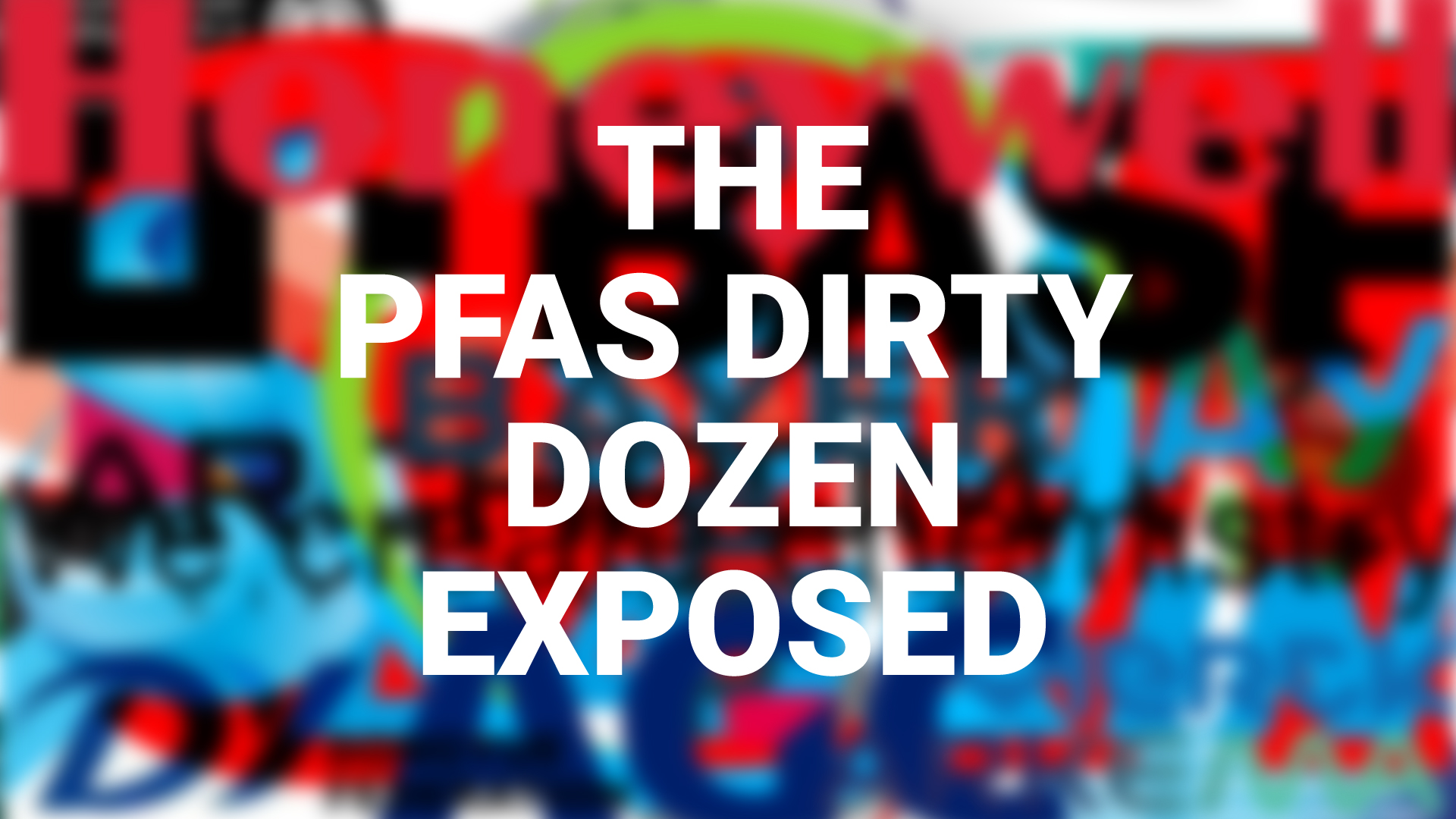
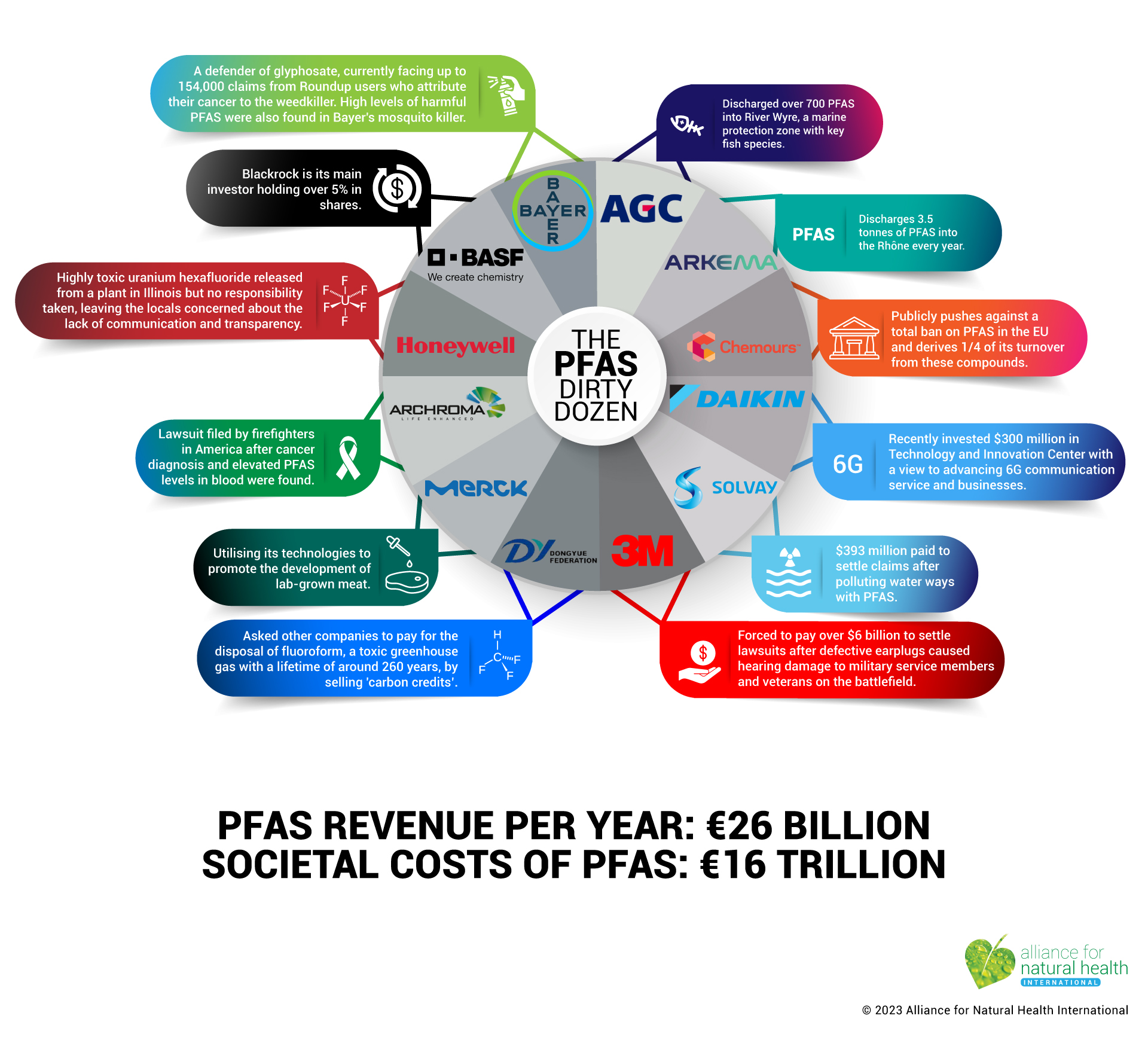

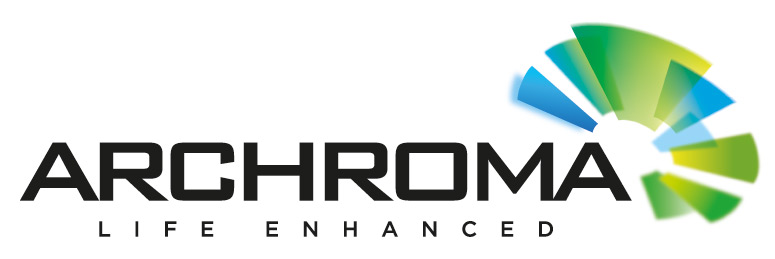


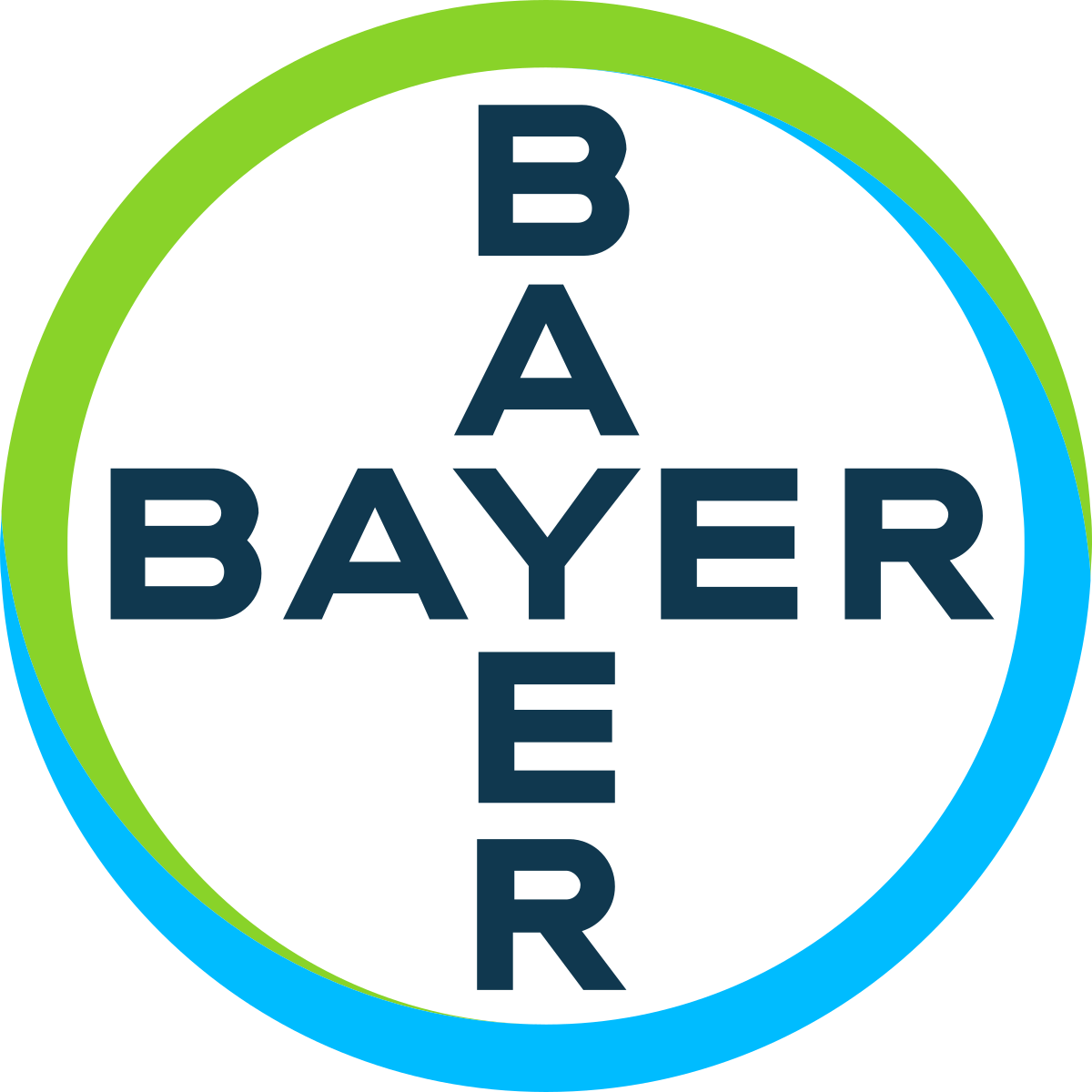





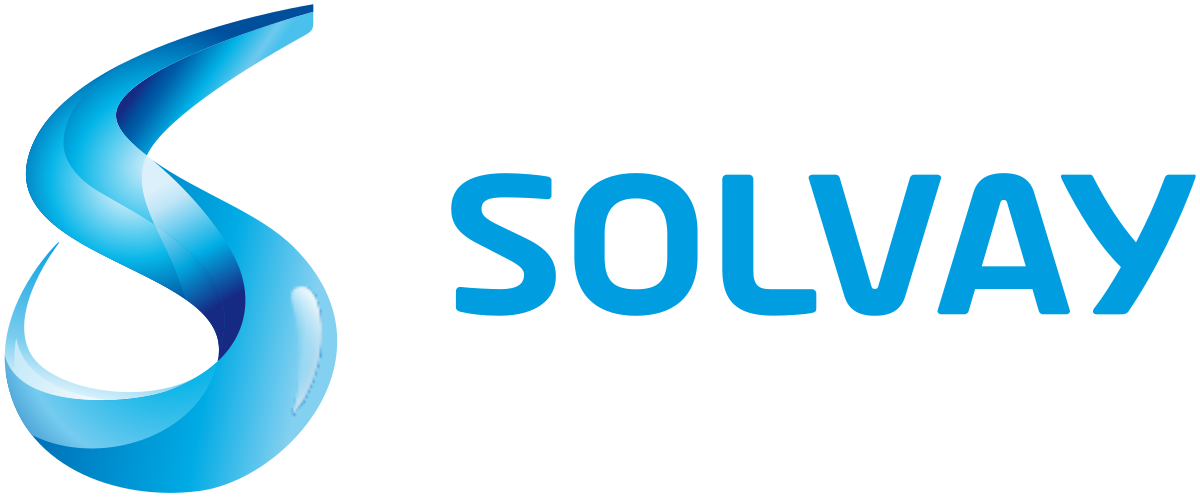



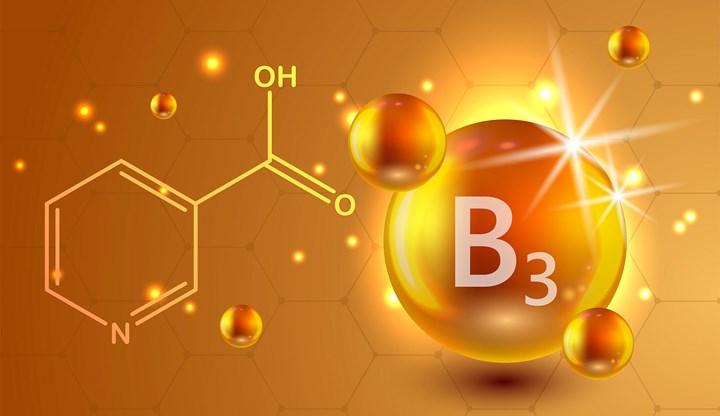
Comments
your voice counts
There are currently no comments on this post.
Your voice counts
We welcome your comments and are very interested in your point of view, but we ask that you keep them relevant to the article, that they be civil and without commercial links. All comments are moderated prior to being published. We reserve the right to edit or not publish comments that we consider abusive or offensive.
There is extra content here from a third party provider. You will be unable to see this content unless you agree to allow Content Cookies. Cookie Preferences